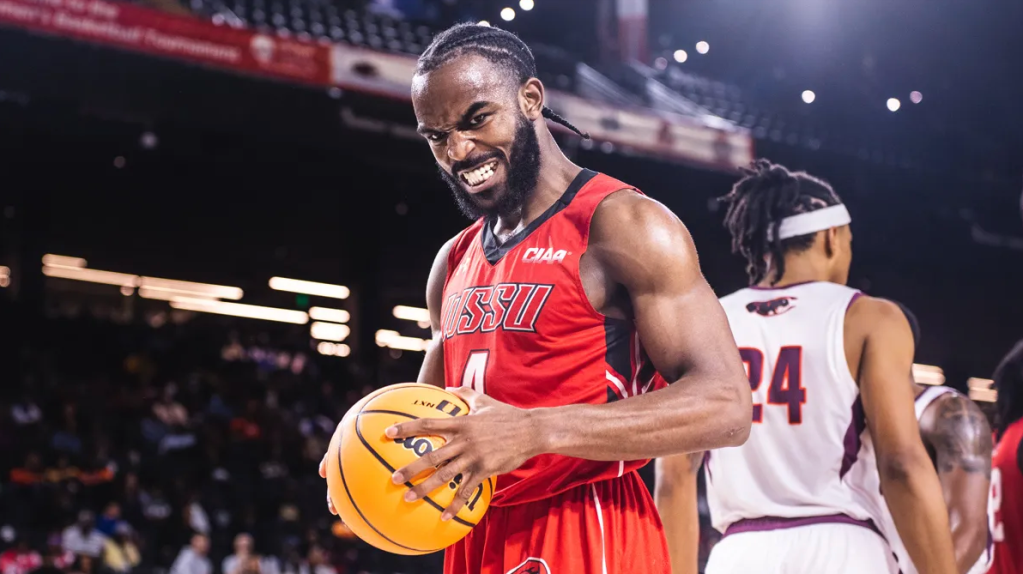
Source: JD Barnes / JD Barnes
It might seem odd that a photographer known for his fashion and beauty editorial work, and for shooting your favorite models and celebrities in magazines like Essence, Harper’s Bazaar and L’ Officiel, might travel across the country during last summer’s nationwide Black Lives Matter protests to document that powerful and historic moment, but if you know anything about JD Barnes you won’t be surprised at all. Born and raised in Montgomery, Alabama, Barnes’s passion for documenting stories began with him being the subject in front of the camera instead of behind it. He has always been one to push limits and to push himself, so when he needed fresh photographs for his (and his friends’) modeling portfolios, he picked up the camera himself. Barnes armed with his cameras, covered demonstrations happening in New York City, in Portland, in Washington, DC, and in Louisville last summer—spending more than six months on the frontlines. We caught up with Barnes to talk about the stories he hopes to tell through his photographs, the dangers he faced while protesting, and his decision to dedicate his art to telling Black stories, only.
CASSIUS presents Young Black Icons
So, modeling moved you from Alabama to New York City. How did you end up behind the camera?
In my early 20s, I was focused on modeling and fashion. I modeled in college and moved to New York City from Alabama planning to grow my modeling career. But I was perpetually broke. I didn’t have any money, and when it came to taking pictures, I thought the name of the game was just trying to take your own pictures or to get your friends to take pictures of you. So, I was trying to learn how to work cameras in order to take pictures of myself, and that kind of evolved into taking pictures of my friends. And then at some point, I just decided that… I guess modeling has a shelf life, but being a photographer, that’s something that I could do even after those modeling days. And then as time progressed, the modeling faded to the background and the photography took more prominence. Modeling was cool, I was able to live in Europe for a while, and while I was there, I actually learned a lot about photography. I’m definitely grateful for those years of modeling. And since I always loved fashion and beauty, I just started learning everything I could about it from a photography perspective. Along the way, I kind of figured out that I was really good at shooting beauty campaigns, and I really enjoyed that kind of work. That became my focus really, the journey of finding what I enjoy. I was working to figure out what brought purpose to my life, and how I can explore those things.
Even before last year, and even before shooting the protests, I made a concerted effort to only shoot Black talent and only work with Black teams. This was 2018 and 2019. I wanted to push Black creative visions forward and show that we are really capable of doing some amazing things. And I guess it kind of sucked, because I had cool white friends who did makeup or hair or other things in the industry, and I had to just pull away from them. Now when I say I had to pull away, I mean it was a conscious choice. I wanted to focus on the parts of the industry that I felt weren’t getting their due, and to me that was Black teams and Black campaigns. And it’s been beautiful. Even outside of me—there are so many Black creatives just shining right now.
Did you bring that same focus into documenting the protests—wanting to continue your work of capturing Blackness and telling Black stories?
Yes. At first, I wanted my focus on capturing the protests to just be in New York. A lot of things were happening there and still are actually… Yes, no matter what the media will or won’t tell you, the fight is still happening throughout the country. While I was out shooting, I developed some really strong relationships with a lot of people who were out there every day like I was, and I just wanted to focus there. Then, things started shifting as these things go… and this happens everywhere, it’s not just New York. The power dynamics shifted. I saw organizations start to come in that weren’t really for the people, even though they were claiming to be—pushing ideas and methods that we know don’t work, but that are more palatable to most people. And it was incredibly frustrating. Wow, I’m speaking like an activist now (laughs). It’s extremely hard to stay neutral in moments like these—when you’re putting your life on the line to fight for change. I was watching my friends, my family, getting tear gassed and shot by rubber bullets. I was injured while protesting and shooting in New York City, and injured again in Portland. It was real out there. You definitely begin to take things personally, and I think that’s what led me to travel. I wanted to see what other cities were experiencing. When I left New York, I went to Portland first. Then I went to DC, and I went to Louisville a couple of times. I remember being in Louisville when the ruling came down. I found myself crying right there with the people. It was a moment I’ll never forget.
Viewing your photographs just adds layers of nuance, depth and humanity to the stories of those protests. Did being out there radicalize you or transform you? And how has that impacted your work moving forward?
It changed me 100%. I definitely became more radical in my thinking and it just depended my perspective on a lot of things—especially as someone who was shooting fashion and beauty which—just keeping it real—is very superficial in the grand scheme of things. And you go from those things consuming your world to being around the homeless, to being around people who have been victimized. Looking at Black women doing this work and having to face your own behaviors, your own ways of thinking. I was out there listening to Black women talk about all the ways they’ve been failed by Black men. It was hard and hurtful. You’re also face-to-face, with police violence, tear gas, rubber bullets, flash grenades. You have friends—who have become like family— who get picked up, who get arrested.
It was a lot. It’s a lot. I would never glorify it or glamorize it.
But you would do it all over again…
I think that it was necessary. And I look at it as more so something that I had to do; it wasn’t a choice. For some people, it’s a choice, and whatever choice they make I respect their choice, but for me it wasn’t a choice. It wasn’t about my comfort. Really, it wasn’t even about the pictures. I have friends who sent me the form to fill out for the Pulitzer Prize and other similar prizes. Every time started thinking about applying, I just couldn’t do it. I’m just not in a place, at this point, to be able to feel like I want an award for that work. I’m not looking for a reward. I did it because it needed to be done, not because I was hoping for a prize or some form of praise or adulation from a lot of the very systems and constructs that people are out there fighting every day to clear out.
Yes! the reward is in the work.
The reward is in the work, and that’s always been my stance. Let the work speak. One day, when it’s time, maybe a book will come. And I’ll be able to share the stories of the people I saw risking their lives everyday… folks who are still risking their lives. Because they’re still fighting. They’re still being brutalized by the police. They’re still getting arrested. So, it’s just not time.
At the end of the day, I just need to see the truth and share the truth, Whatever the truth is… whether it’s joy, whether it’s love, whether it’s hatred, anger, violence… The truth deserves to have its day, always. And that’s what I hope my images always portray.
What advice do you have for photographers looking to follow in your footsteps?
Get to know who you are. That’s the root from every great thing springs. Figure out what really speaks to you, and don’t be afraid to experiment. Experiment with different genres. Constantly work at learning your camera. And figure out what you’re trying to say. You can speak to people and change lives through a single image—that’s powerful.
JD Barnes is the Chief Photographer for Essence Magazine. Visit his website. Follow him on Instagram at @jdthecombo.
Josie Pickens is an educator, writer, cultural critique and community organizer. Connect with her on Twitter and Instagram at @jonubian.
Click here to learn more about Cassius’s Young Icons. They’ve got next.
















